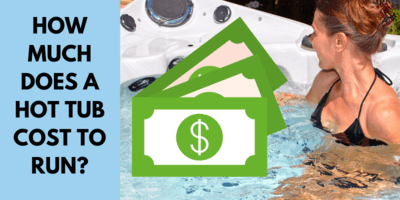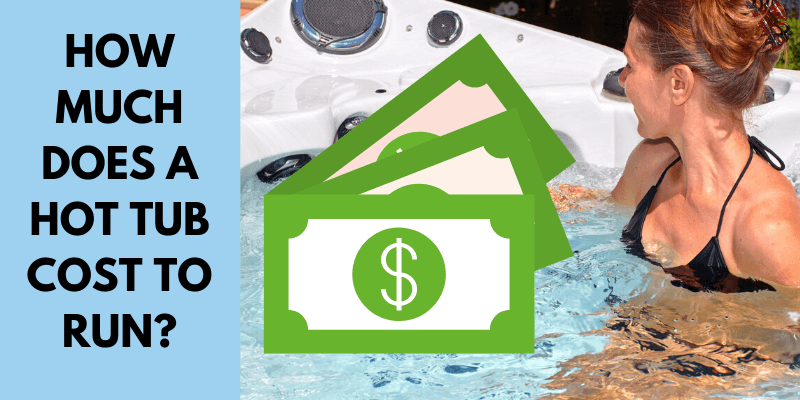
Apart from the one-off cost of buying and installing a hot tub, there are going to be ongoing running costs as well. Your hot tub is going to add to your monthly energy bill on an ongoing basis so it’s really important to understand what the likely costs are before going ahead with a purchase. It would be an unfortunate situation if your hot tub running costs prevented you from enjoying your hot tub to it’s full potential!
There’s a lot of different advice online on this topic so I decided to do my research and try to provide the most comprehensive answer!
So, how much does a hot tub cost to run? On average a hot tub costs around $1 per day in electricity to run. This figure can vary widely depending on a large number of factors with some owners reporting $10 a month in electricity usage up to $100 per month. Most common usage is in the $20 – $40 per month range.
However, to get a really accurate idea of the cost of running your hot tub you need to look in more detail at a number of different, often slightly variable factors. It really is worth taking the time to do this as, once you have your hot tub, if you find you keep it switched off because you simply haven’t budgeted for the running costs then it will have been a terrible waste of money.
How much electricity will my hot tub use?
The amount of electricity your hot tub uses will vary an enormous amount depending on a number of different factors.

- The ambient air temperature – A hot tub will use significantly more electricity keeping it’s heat going in a cold climate than in a really warm climate. Bear in mind that the water in a hot tub is heated to between 37 and 39 degrees C on average so, if the ambient air temperature is significantly below this, it will make a big difference.
- Think about the average temperature in the UK for example, which is 5 degrees in the winter and 19 degrees in the summer. The hot tub will have to work an awful lot harder to keep the temperature up than it would if it was in, say for example Florida or Miami, where the ambient air temperature is going to be much closer to that of the water temperature in the hot tub. Chances are that if you own a hot tub in the UK it will take more energy to keep it heated than the same hot tub would in California!
- Seasonal use – If your hot tub is outdoors and you live in a warm climate you may well keep your hot tub on all year round. However, if you are in a slightly colder climate you might choose to winterize your hot tub and not use it for the coldest part of the year at all. Obviously, this will help to offset the cost of electricity when you look at the cost of running a hot tub over the span of the whole year.
- The number of hot tub sessions – The amount of use that the hot tub gets will also affect the amount of electricity that it uses. A heavily used hot tub will use a lot more electricity than one that is only used maybe once or twice a week. As soon as you remove the Hot Tub Cover then all of the valuable heat escapes, similarly our bodies soak up the heat from the water once we are in the hot tub and all of that swirling and swishing around water helps it cool more quickly as well.
- Water temperature – Similarly, the operating temperature of the water will also have a big effect. The hotter you like the hot tub the more electricity it will use and if you can have it a degree or so cooler it will save you electricity in the long run. Generally speaking, it’s more economical to keep your hot tub running at one steady temperature than it is to set the temperature lower when you’re not using it and then heat it up several times in a week. It’s a similar principle to your house central heating – you will use less energy by trying to keep a constant temperature and having the heating on little and often then you will allowing the temperature to drop and then heating it up from scratch.
- Quality of hot tub insulation– However the biggest influence on the amount of energy that a hot tub uses is the construction of the actual hot tub itself. If the hot tub is cheaply constructed and doesn’t have high-quality and sufficient insulation it will inevitably lose heat constantly. Cheaper hot tubs therefore invariably use more electricity to run and to keep at temperature and over a number of years the extra amount of electricity used makes the cheaper purchase price false economy. It’s far better to spend a little more at the outset and to buy a hot tub with the very best foam insulation technology possible. After the initial outlay this will save you a significant amount of money in energy bills every single month throughout the whole life of the hot tub.
Of all of the variable factors that are essentially out of your control both the actual cost of the electricity in the first place and also the ambient air temperature are going to make the biggest difference. Let’s just have a look at how the price of a kWh of energy varies from state to state in the examples below:
| Alaska | $22.48 | |
| Arkansas | $9.30 | |
| California | $19.94 | |
| Hawaii | $31.70 | |
| Louisiana | $8.84 | |
| Average US | $12.79 |
There is also going to be a huge difference in the ambient air temperature depending upon where you live as well. Again just using the US as an example the average air temperature is:
| Hawaii | 72.95 F |
| Georgia | 62.3 F |
| Virginia | 55.54 F |
| Ohio | 50.88 F |
| Colorado | 46.26F |
| Alaska | 32.03 |
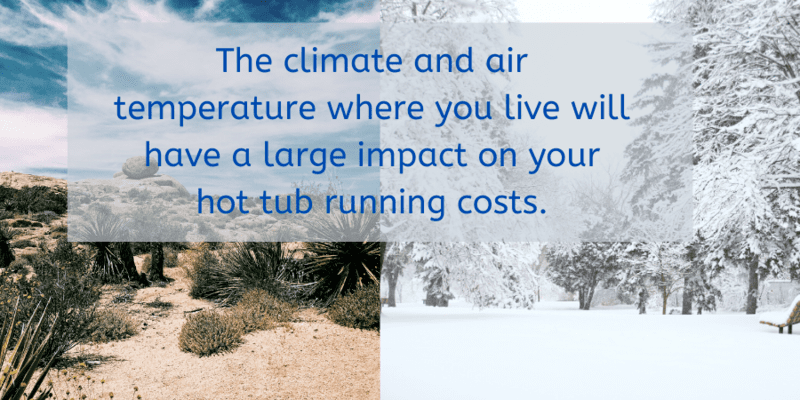
Now I’ve read a number of comparisons between the costs of buying a cheaper hot tub and paying extra energy to heat it and purchasing a much more expensive hot tub and paying less in energy bills. In theory, it takes around 10 years for the extra purchase price to be recouped.
This might seem like a long time and you might wonder whether it is really worth the extra outlay for the more expensive hot tub. Surely it would be possibly a good plan to pay for a less expensive hot tub and then to spread your payments, as it were, over the years to come through slightly higher electricity bills?
However, the point is that after 10 years it’s possible that a cheaper hot tub may be coming to the end of its life you might also find that during those 10 years you have had to pay for some maintenance bills as well. A more expensive hot tub should last significantly longer than 10 years and you would also expect, due to the higher quality of the hot tub components, that you would have had fewer maintenance bills during those first 10 years too.
So, on balance, it seems that it’s a better idea, if possible, is to purchase a more expensive, higher quality hot tub at the outset. Apart from the practical and financial considerations, there’s also the extra pleasure of enjoying the quality of a more luxurious hot tub and in many ways, this can’t really be quantified!
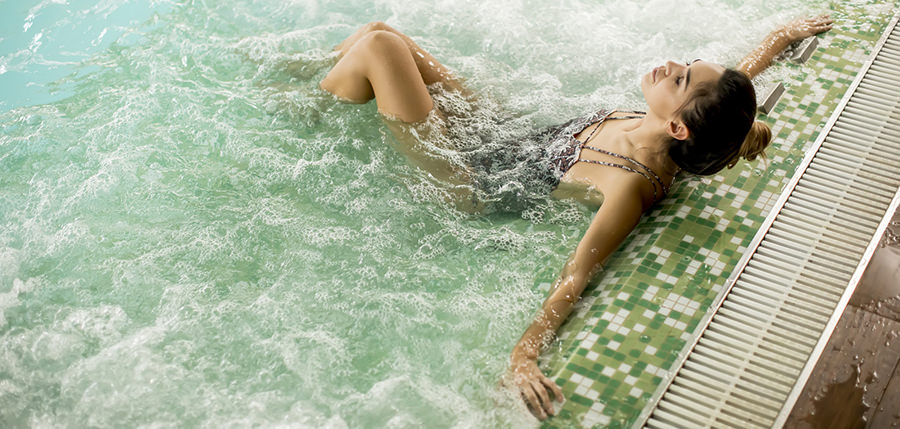
Comparing hot tub running costs
Most hot tub manufacturers will give you the amount of electricity that each of their hot tubs use in terms of kilowatt hours of energy consumption. You can get a rough idea of how much the hot tub will cost to run per hour by multiplying the number of kilowatt hours of energy consumption by the cost per kilowatt-hour as provided by your energy supplier.
You can use the simple calculator below to help.
Bear in mind that this will only give a very crude figure to enable you to do a like-for-like comparison with different hot tubs. In reality, each hot tub will vary in its energy use depending upon its level of insulation and efficiency and how it is used. This method only gives you an hourly cost assuming that the hot tub heater is on at full power for the whole hour as well as the pump running. In reality this will not be the case but this method will give you a good, simple way to compare the efficiency and running costs of any hot tubs you are potentially going to purchase.
If you want a much more accurate price comparison then this one is excellent and should give you all the information you need.
Some example hot tub running costs:
| Hotspring Jetsetter 3 person | £32/$40 per month |
| Hotspring Grandee 7 person | £39/$50 per month |
| Prestige Elan 3 person | £20/$30 per month |
| Prestige Regent 7 person | £26/$35 per month |
| Beachcomber 700 Series | £27/£35 per month |
| Beachcomber 500 Series | £17/$25 per month |
The numbers in the table above give you a rough idea of the price range that running a hot tub might fall within. Results will vary according to all of the many variable factors already discussed.
A number of hot tub manufacturers do actually provide a running cost calculator on their website. These are really cool and allow you to dial in the exact model of hot tub you are interested in, the climate in which the hot tub will be used, the likely number of times you will use the hot tub each week and the cost per kilowatt hour of electricity that you are paying your energy company for. These online calculators provide a much more accurate way of comparing at least the same manufacturer’s different models of hot tubs. They will give a reasonably accurate idea of your monthly running costs but in reality, you will only get a real full true picture after a year or so of running a hot tub at home.
Does a large hot tub use more electricity than a small one?
Surprisingly, assuming that it is well insulated, a larger hot tub doesn’t use a significantly higher amount of electricity than a smaller one. The main expense is in heating a large body of water in the first place and it’s surprising how little an extra bit of water costs. If a hot tub is twice the size of another it doesn’t mean that the electricity bill will be twice the size as well!
Does leaving a hot tub on all the time use more electricity?
No. The best thing is to leave your hot tub on 24/7 and this is what hot tubs are designed to do. It uses a lot of energy to heat up a large body of water from scratch each time you want to use the hot tub. It’s much better to keep the temperature constant and for the heating system just to be topping it up periodically and not working too hard. This is even the case if you intend only using your hot tub once a week or so. However, if you are going away for maybe 2 or 3 weeks it then becomes more economical to lower the temperature a little bit while you are away and then raise it again once you are back.
The only time that it makes economic sense to actually switch your hot tub completely off is if you are absolutely sure that you won’t be using it for several weeks. Maybe you are going away for an extended period of time or you don’t intend to use the hot tub at all during the winter months. In these cases, the hot tub should be fully drained and prepared for its period of rest and completely switched off.
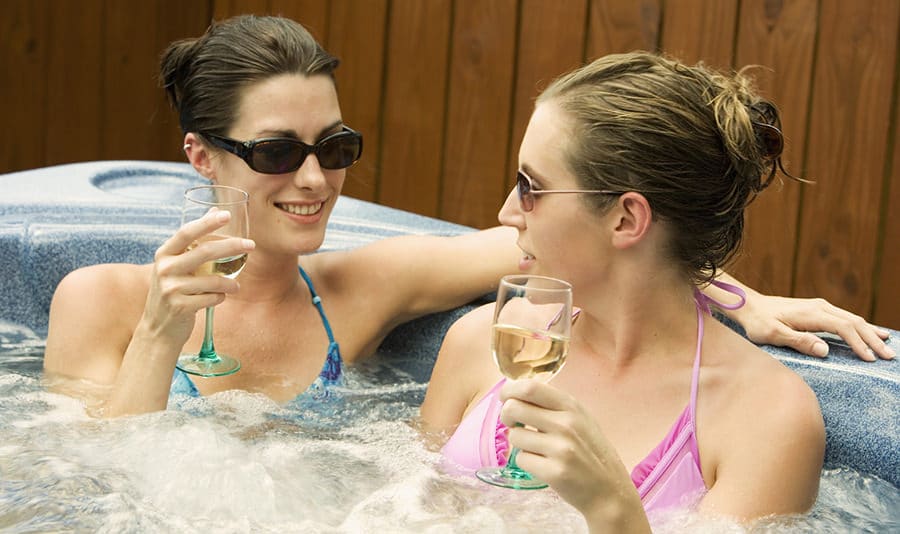
How to reduce your hot tub running costs
You can check out my detailed post on how to save money running your hot tub here. However there are some ideas down below to get you started.
- Check your cover – Often the cover that’s supplied with your hot tub can be relatively thin and flimsy. A high-quality cover with an inbuilt heat shield will do a better job. It will cost a little bit in terms of the outlay but you will recoup the cost over time. Also, check the cover for wear and for any splits or spaces where the heat could escape. Similarly, a poorly fitted cover will allow all of the hot air goodness to escape so make sure it is securely and accurately in place and that you put it on the hot tub when it’s not in use.
- Use a thermal blanket – Using a thermal blanket over the water’s surface adds another insulating layer and, if you use one in combination with a good quality cover you will see a decrease in your energy bills. Obviously, they will only work if you diligently put them in place when the hot tub isn’t being used, so try to get into the habit of replacing them after each hot tub session.
- Switch off the air jets – when you have your air jets on they combine the warm water with ambient temperature air to create that lovely swirling bubble effect. This is lovely whilst you are actually in the hot tub but, it wastes energy when you are away because the air cools the water making the heater have to work harder to keep the temperature up. So, after every session switch those air jets off!
- Check your insulation – ideally, there should be foam insulation sprayed in between the hot tub shell and the outer cabinet. In more modern hot tubs this will, most likely, have already been done. However, in older or more basic hot tubs there might still be the option of adding more insulation. Remember, this is one of the most important aspects of keeping the heat in and your running costs low so any insulation you can add will have a big effect. You can use household loft insulation in black bin bags and stuff it into any gaps that you can find. Be very careful not to restrict any air intakes or to get the insulation near any parts of the hot tub mechanism where it could cause problems.
- Keep out the wind – If your hot tub is outside in an exposed spot then the cold wind will be able to get inside the hot tub, cool it down quicker and subsequently raise your energy bill. It can be really simple to build a windbreak or some other form of simple shelter that will just keep the wind off the hot tub and make a big difference. This will make it warmer and more pleasant to actually be in the hot tub as well if you can reduce any draughts.
- Keep your filter clean – A dirty filter will require the pump to work harder to draw the water through it and will, therefore need more energy. Keep up with the regular maintenance schedules and make sure that you clean and change the filter at the recommended times to be the most energy efficient.
- Check your electricity supplier’s charges – If you are going to buy a new hot tub and you know that your energy usage is going to increase then it might be the perfect time to have a quick look at how much your supplier is charging. Many of us just stick with the same supplier year in year out for convenience but, today, with many price comparison websites out there it’s relatively quick and easy to compare deals. You could potentially save yourself a lot of money over a period of time by switching to a better deal.
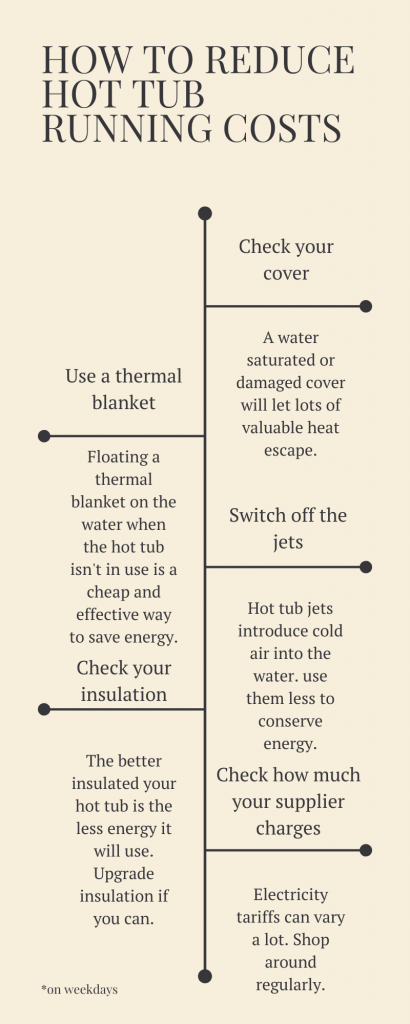
Should I upgrade my hot tub to save energy?
This is a tricky question and again, depends on a number of very variable factors as well as your own eco-consciousness! Firstly, it’s true to say that, over the last five years, hot tub manufacturers have made great improvements in the energy efficiency of hot tubs. Not only do they use far less energy these days but the manufacturing process of a number of top manufacturers now includes using recycled materials and a reduced carbon footprint.
So, if your hot tub is say ten years old then it is probably using a considerably higher amount of energy than a new one. However, it still could have at least another 5 years or more of good use in it. Bear in mind that when you buy a new hot tub there is still a cost to the environment in the manufacture of the new hot tub and also in the disposal of the old one. Yet, on the other hand, you could save quite a lot of energy over the next 5 years with a more energy efficient hot tub. Is your energy supplier 100% green though? If not, is there really any point?
What other hot tub running costs are there apart from electricity?
Electricity is the big one but you will also have some other regular costs as well. In terms of the overall cost of purchasing and running a hot tub they are relatively negligible but here they are anyway:
Chemicals – Budget for $150 – $250 per year depending upon how much use the hot tub gets. Don’t skimp on this and keep up regular maintenance.
Filters – $100 per year again depending upon usage and the size and type of filters that your hot tub needs.
Ongoing repairs – Luckily hot tubs generally require little repair or maintenance beyond changing the filters. It’s relatively unlikely that you will need to have expensive repairs done certainly in the first few years and most hot tubs will come with a long and comprehensive warranty.
Insurance – Obviously you will need to look into the insurance implications of adding your hot tub to your existing home insurance. Depending upon the installation and the insurer it will be eithet classed as contents or buildings and you will have to check what/how it will be covered for accidental damage.

What are the alternative energy options for a hot tub?
If all of the number crunching is making your eyes water and you are becoming seriously concerned about the ongoing costs of running your hot tub what can you do? You might have a similar dilemma if you consider the environmental impact of relatively seriously upping your energy usage as well. Are there any ways to run a hot tub using alternative power sources or ways to make a serious dent into your running and environmental costs?
Well, luckily there are, here are a couple of ideas:
Seasonal usage of your hot tub – If you live in an area where there is a clear delineation of winter and summer you might want to consider winterizing your hot tub and not using it at all for 6 months of the year.
Obviously this will literally half your ongoing energy bill and also cut your environmental impact in half.
This sounds great and you really may not be concerned about the joys of hot tubbing in the snow at all. There is also something to be said for the pleasure of refilling the hot tub and having the luxury of a soak available only for half of the year. It will feel like more of a treat if you don’t hot tub all year round.
However, winter hot tubbing is seriously pleasurable and, if you consider the overall cost of your hot tub in terms of cost per soak then it might make less financial sense as well.
Let me explain:
Let’s say for example that you buy a hot tub and keep it for 15 years after which it has become a bit dated and not particularly energy efficient. If you add together the purchase cost plus the running costs for the whole of the 15 years and then divide it by the number of uses the hot tub gets then you end up with a cost per soak.
For example, your hot tub may cost $12,000 to purchase plus $50 per month for electricity and chemicals. In total, over it’s 15 year life that is $21,000.
Let’s assume that you soak 3 times a week every week for 15 years. That comes to a total of 2340 hot tub sessions over the lifetime of the hot tub. So, dividing the number of sessions into the total cost gives us a figure of $8.97 per hot tub session.
Now, if you only use the hot tub for half of the year your total running costs come down to $16,500. You will only manage 1170 hot tub sessions in the hot tub’s life and so this works out at $14.1 dollars per session.
So, as above you will probably find that if you keep the hot tub on all the time and regularly soak in it, rather than not use it for half of it’s life, that the cost per soak is considerably less. It will obviously depend upon how much you use your hot tub, your energy cost and the purchase price of the hot tub itself but it is serious food for thought.
In many ways, a hot tub is an expensive luxury to have sitting idle not being enjoyed!
Can you run a hot tub on alternative energy?
The good news is that it is perfectly possible to run a hot tub partially on solar power. It is a relatively inexpensive improvement to make and, over a number of years will not only pay for itself but also significantly lower the running costs of the hot tub as well.
The main issue is that you do need to live in an area where you receive a significant amount of sunlight each day but, even in less sunny climates you should be able to supplement your electrical heating with solar. You will also need to bear in mind that the panels themselves do take up a fair amount of space and you will need to place them in a position where they will get the most sun during the day.
The panels don’t have to be right next to the hot tub so you won’t have to move your hot tub but the shorter the pipework the less heat you will lose.
So, how does solar hot tub heating work?
It’s a simple system where cold water is piped out from the lower part of the hot tub and filtered (or pumped) through the solar panels. As the water passes through the panels it is heated and then filtered back into the hot tub at the top.
It’s a very simple but efficient system.
You can buy solar systems as an add on but you may well need to make sure that your hot tub is out of warranty before making and alterations to it or contact your manufacturer for advice.

